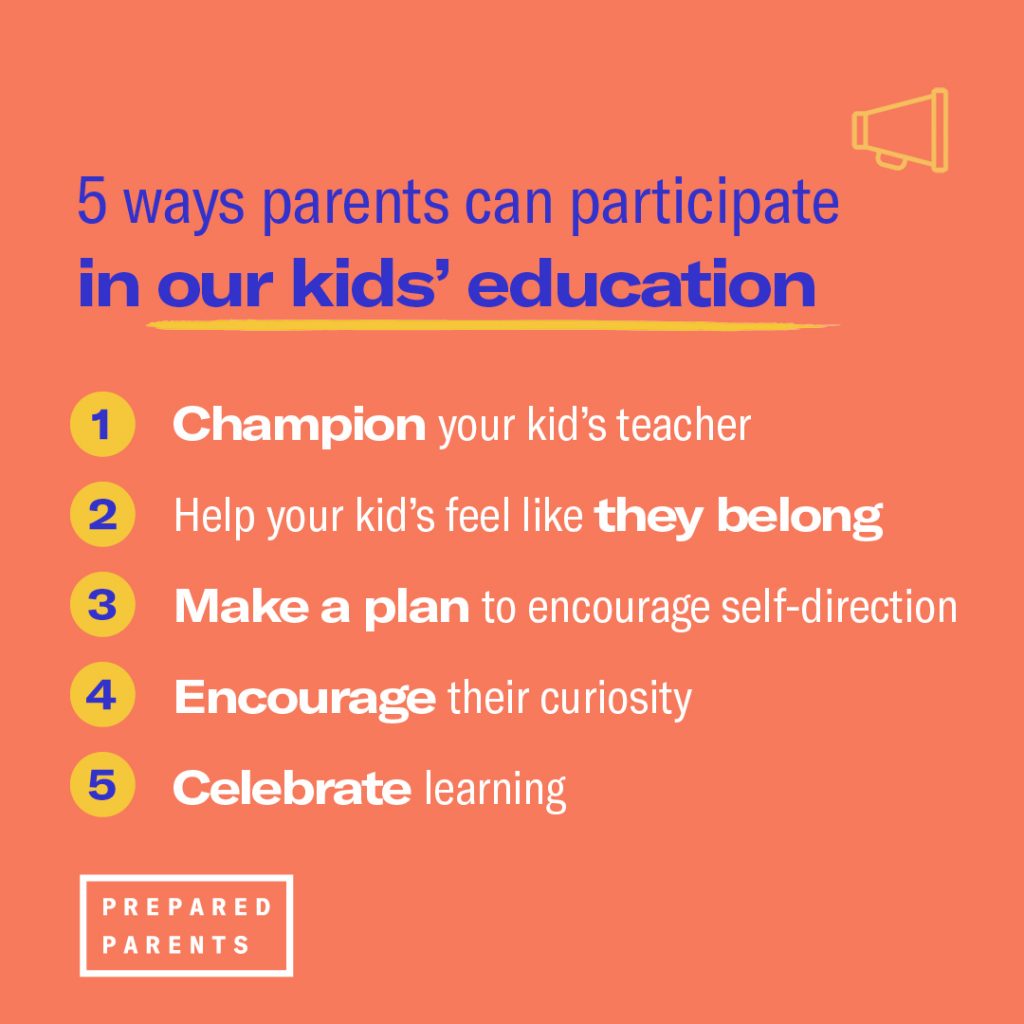When we were thrown into the untested experiment of remote learning, we chalked up some wins.
- We got a glimpse into how our kids learn.
- We forged partnerships with our kid’s teachers.
- We discovered what sparks our kid’s curiosity.
- We learned to co-exist while working and learning side-by-side.
But what’s our role as the educators take over once again?
Kids have positive outcomes when they know they matter—better attendance at school, more self-confidence, resilience, and the ability to adapt to changes. Whether we’re their full-time teacher or they’re in a classroom during the day, there’s a place for parents in the day-to-day of school.
Research shows that when a parent or caring adult is involved in a kid’s education, the student is more likely to:
- earn higher grades and test scores,
- enroll in more challenging academic programs,
- have better attendance,
- develop self-confidence and motivation in the classroom,
- Adapt to school with better social skills, and
- improve behavior at home and in the classroom.
The student is less likely to:
- have low self-esteem,
- need redirection in the classroom, or
- develop behavioral issues.
Here are five ways a parent or caring adult can participate in school that will benefit a kid’s learning.

Champion your kid’s educational leader
- Make a connection with them.
- Let them know you’re in their corner
- Support them through the challenges ahead by checking in frequently and asking how you can help.
- Introduce them to your kid with the parent-to-teacher letter that details what you’ve observed about how your kid learns, what they’re passionate about, and where they may need to grow.
Confirm your kid’s sense of belonging
Belonging is a mindset that research shows can be changed. Confirm to your kid that they matter. A kid who recognizes their value to their community will develop a sense of belonging. With the confidence that builds they can focus their attention to learning and not worry about whether they fit in or not.
Make a plan to encourage self-direction
Take a few moments to meet together with your kid and make a plan. This is an opportunity for you to be amirror and point out what you’ve noticed in their development and then ask what they’d like to work on during the new school year. Focus on how they’ve grown through their home-school experience and let them know what you’ve noticed they’ve enjoyed learning and what has captured their interest. Ask your kid:
- What are you curious about?
- What do you want to continue to explore?
- How can I support you?
To stay on track, help them set goals. List priorities and develop a strategy. Let your kid set the pace, but help them break the bigger tasks into smaller chunks. The science of learning tells us almost any student can master material, but they do so at their own speed and using different processes.
Respond to their curiosity
Don’t feel pressure to replicate what happens in the classroom, but do find ways to nurture your kid’s curiosity. Psychologists view curiosity as a life force, vital to happiness, intellectual growth and wellbeing. It is satisfied when their questions are answered, because when we enable our kid to ask questions they get better at learning. It becomes a virtuous cycle because everything a kid learns makes it easier to learn more. They’re building on what they already know. In other words, knowledge builds on knowledge.
Celebrate learning
Celebrate and reflect on what your kid’s accomplishing. This will spur them on to keep learning. Research shows that reflection boosts productivity. Use these prompts to encourage your kid to evaluate what they’ve done and how their efforts can propel them forward:
- What worked to get me into learning mode?
- How did I keep going when it felt too hard?
- How did I shift my strategy when my approach didn’t work?
- How did I stretch myself?
- How can I use this to push through learning challenges?

